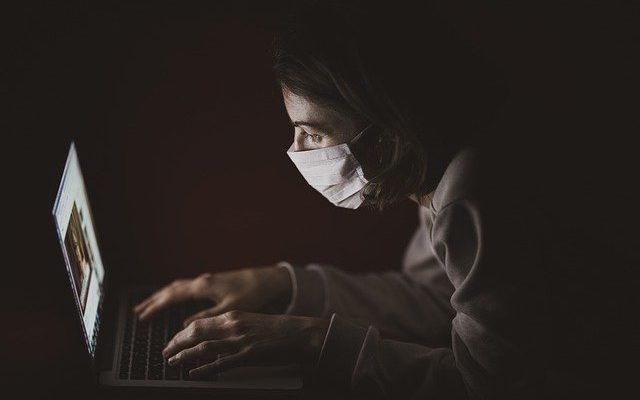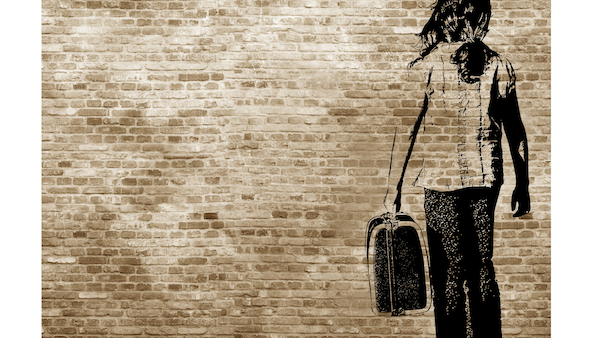#Coronateaching: Syndrome or a new opportunity for reflection? I/II

Débora Ramos Torres | March, April and May 2020 have been months of great pressure due to the serious global health emergency crisis caused by the COVID-19 pandemic, during which physical and social distancing has been required to stop the spread of the virus as a means to limit contact between people.
This widespread quarantine, of residential confinement, has impacted all sectors of life, including the paralysis of those who energize work environments, such as the economic, culture, transportation sectors, and, higher education.
The suspension of academic activities, such as face-to-face classes, led educational institutions to search for solutions that would allow substituting them through various technological and digital platforms, a fact that occurred globally in almost all parts of the world.
Faced with these facts, the continuity of training processes at all educational levels has been a challenge. Both schools and universities, and all types and sizes of institutions of higher education (HEI) or tertiary, have had to make a transition or adaptation of their educational models, giving way to an open, distance and online modality implemented by accident, or as they say, an educational model in times of health emergency due to the coronavirus (2). This Emergency Remote Teaching (ERT), characterized by the abrupt migration to online learning, has been known as Coronateaching, a syndrome caused by the effects that this type of practice has had on teachers.
The different educational modalities
Online education or e-learning
It is understood as a variant of distance education, and uses digital technologies to transform the learning experience. Therefore, strictly speaking, to conceive, plan, design and develop a genuine curricular unit/course or online program demands a lot of preparation. It may consume up to a year of teacher training and collaboration with instructional designers, programmers and illustrators; it also requires the availability of financial resources and complex technological infrastructure, including regular access to digital tools and devices, and a reliable broadband Internet connection, and frequently, also student guidance and support. (1) (5) (8)
Distance education (DE)
It is conceived as a consciously organized pedagogical option for situations in which teachers and students are not physically together, and for the development of complex and comprehensive learning moments, and it requires the implementation of adequate didactics and methodologies. Regarding the use of technologies, the DE does not subscribe to the Internet exclusively, but rather in a complementary way, frequently relying on the printed book, audios, videos, websites, blogs, among other resources. Similarly, the organization of a DE program requires planning, time and technical, human and financial resources. Experts estimate that, with all the necessary resources, a teacher can take between six and nine months to design an online course and that even after three periods, they may make adjustments to it (8).
Emergency Remote Teaching (ERT)
The crisis and states of emergency decreed globally by the COVID-19 pandemic required an expeditious response. In turn, this required a forced transition in order to sustain the training continuum, which led to a process of intricate migration to online learning called Emergency Remote Teaching (ERT), or emergency online education, to ensure continuity as we know it. Thus, different schools at the basic educational level and higher education institutions (HEI) have very rapidly taken on new measures, leaving both students and teachers overwhelmed, while the most appropriate course during the crisis is defined (3).
The implementation of emergency online education is what has been identified as coronateaching, which according to the definition of Luz Montero, director UC Online of the Pontificia Universidad Católica de Chile, is nothing more than the process of “transforming the face-to-face classes into a virtual mode, but without changing the curriculum or methodology” (9), leading to the risk that for many, these processes of immediate migration to online teaching and learning (improvised in many cases) are their first experiences of e-learning, and this could end up in sub-optimal results or in frustration and distress due to the adaptation to an educational modality that has never been experienced before, and without the corresponding training for it (4).
The ERT is explicitly different from online learning in that the former represents a temporary and abrupt change in pedagogy due to crisis circumstances; that is, a change in the normal delivery of instruction to an alternative delivery mode, while, as previously indicated, online education is a planned experience that has been conceived and designed to be available online from the beginning (1) (5). Thus, the ERT consists of providing temporary access to instruction and instructional supports in a quick and easy way to be configured during the emergency or crisis. It involves using totally remote instructional solutions that would otherwise be delivered in person, or as combined or hybrid courses, and which will return to that format once the crisis or emergency has subsided (7) (8).
In addition, we also find in social network discussions and recent research, indications that ERT has emerged as a common alternative term used by researchers and academics of online education, to provide a clear contrast to what is known as quality online education. Abreu (2020) argues that in the conceptualization of ERT, the choice of the term ‘teaching’ over options such as ‘learning’ or ‘instruction’ is due to its definition, understanding it as ‘the act, practice or profession of a teacher and the concerted exchange of knowledge and experience’ (p.9). Similarly, because the first tasks to be delivered during the changes produced by the emergency, are those of a teacher, instructor or lecturer (1).
It is also observed that teachers without the necessary training to carry out the corresponding transfers from the curricular units to the VLE and, for the most part, without adequate knowledge and effective use of the technological resources offered by the web 2.0. and without the sufficient skills to correctly select the teaching and learning methodologies applicable to these environments -such as gamification, narrative metaphors, and flipped classroom, among others (6) – were forced to offer these courses and/or programs that had not been originally designed for these spaces. Nevertheless, they have been making laudable efforts with some failed attempts, in order to advance in the objective of giving continuity to the training process.
With only a few days to quickly put everything that is done in the classroom on platforms such as Google Zoom, Moodle or Hangouts, which stand out among the favorites of teachers and many institutions, as well as applications that most use as Google Drive and Google Classroom, without showing preference for other products to apply and use in remote instruction, give indications or show signs that many have confused online education with teacher-student meetings with long classes in videoconferencing rooms and with overloads of asynchronous delivery strategies, causing a pessimistic scenario of exhausting experience. This is due to the fact of having relied on the traditional passive mode of teacher-centred teaching, without having had the careful consideration of appreciating how different design decisions impact on the quality of instruction, issues that are and will be absent in most cases in these times of emergency (1) (5) (7).
Although the main objective continues to be to create the best possible student experience in the midst of incredibly turbulent times, the fundamental point here has been that the approach to that teaching (and) learning process has presented demands and requirements for changes on the main actor in these processes, that is, on the university professor and his or her teaching practice. A large part of the success of this model rests on the professors, and a high level of disposition towards the acquisition of digital competencies, towards methodological experimentation and innovation or adaptation of evaluation processes is expected from them, among other required actions, because they have been identified as the main articulators of this sudden process of adoption and transition in the framework of the health crisis (4).
Notwithstanding these circumstances, during the last two months specialists from different universities, networks and observatories in the Latin American and Ibero-American region, have hastened to develop guidelines and recommendations on instructional practices or learning strategies, to be implemented by teachers, with creativity, flexibility and effectiveness, to support students to achieve the core learning of their respective courses in a virtual or online environment in times of uncertainty (9).
Thus we find, among other initiatives:
-The handbook with guidelines for online teaching in coronavirus time, prepared by specialists from universities in Chile [1];
-The series of educational resources, good practices and readings aimed at teachers, non-academic staff and students to deal with the crisis by COVID-19 provided by the Observatorio de Innovaciones Educativas (Observatory of Educational Innovations) of the Tecnológico de Monterrey [2];
-The Educaweb portal [3] which offers advice so that teachers who are carrying out remote emergency teaching can reshape their teaching practices and get closer to online education,
– UNESCO’s platforms and resources, such as national platforms and learning tools [4], as well as the Digital Learning Resources Portal [5] which includes a list of educational applications useful for both teachers and students.
Débora Ramos Torres is a UNESCO-IESALC academic specialist.
[1] https://www.latercera.com/
[2] https://observatorio.tec.
[3] https://www.educaweb.com/
[4] https://en.unesco.org/
[5] https://en.unesco.org/
References:
- Abreu, J. (2020). Times of Coronavirus: Online Education in Response to the Crisis. Daena: International Journal of Good Conscience. 15(1)1-15. Mayo 2020. Disponible en: http://www.spentamexico.org/
v15-n1/A1.15(1)1-15.pdf - Downe, M. (2020). Opinion: This is not home schooling, distance learning or online schooling. Recuperado el 27 de Abril de 2020 de Atlanta Journal-Constitution Website: https://www.ajc.com/blog/get-
schooled/opinion-this-not- home-schooling-distance- learning-online-schooling/ b9rNnK77eyVLhsRMhaqZwL/ - Estrada Villafuerte, P. (2020). El aprendizaje remoto enfrenta otro reto: el profesorado no está preparado para la enseñanza en línea. Recuperado el 5 de Mayo de 2020 de Observatorio de Innovación Educativa. Tecnológico de Monterrey. Website: https://observatorio.tec.mx/
edu-news/profesorado-no-esta- preparado-para-educacion- online - Henríquez, F. (2020). El rol clave del profesor en la educación on line durante la crisis sanitaria. Recuperado el 27 de Abril de 2020 de El Universal Website: https://eluniversal.cl/
contenido/11348/el-rol-clave- del-profesor-en-la-educacion- on-line-durante-la-crisis- sanitaria - Hodges, Ch., Moore, S., Lockee, B., Trust, T. and Bond, A. (2020). The Difference Between Emergency Remote Teaching and Online Learning. EDUCAUSE Review, March 27, 2020. Recuperado de https://er.educause.edu/
articles/2020/3/the- difference-between-emergency- remote-teaching-and-online- learning - Jadán J. y Ramos, C. (2018). Learning Methodology Based on Narrative Metaphors and Gamification: A case study in a blended Master’s Program, Hamu
t´ay, vol. 5, nº 1, pp. 84-104. - Marcus, J. (2020). Will the Coronavirus Forever Alter the College Experience? NYTimes.
https://www.nytimes.com/2020/04/23/education/learning/ coronavirus-online-education- college.html - Mosquera, J. (2020). Diferencias entre la enseñanza remota de emergencia, la educación on-line y la educación a distancia.
- Pérez, C. (2020). El gran test de las clases ‘online.’ Recuperado el 27 de abril de 2020, de La tercera website: https://www.latercera.com/
tendencias/noticia/el-gran- test-de-las-clases-online/ JOJOMO7S2BAB3FNRJYPPHGUZ3I/
Imagen de Engin Akyurt en Pixabay
RELATED ITEMS








